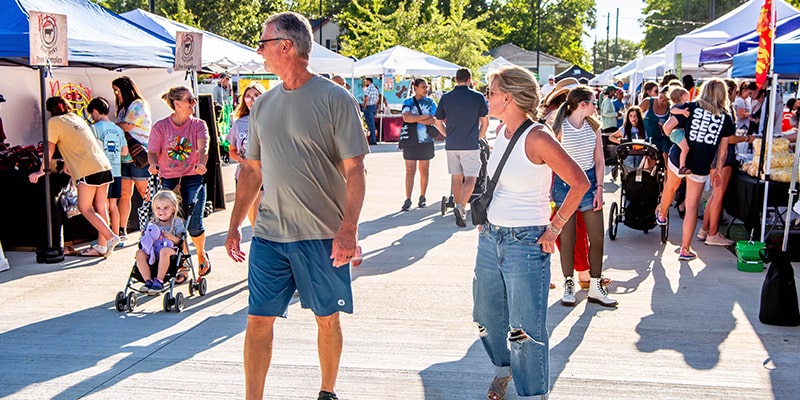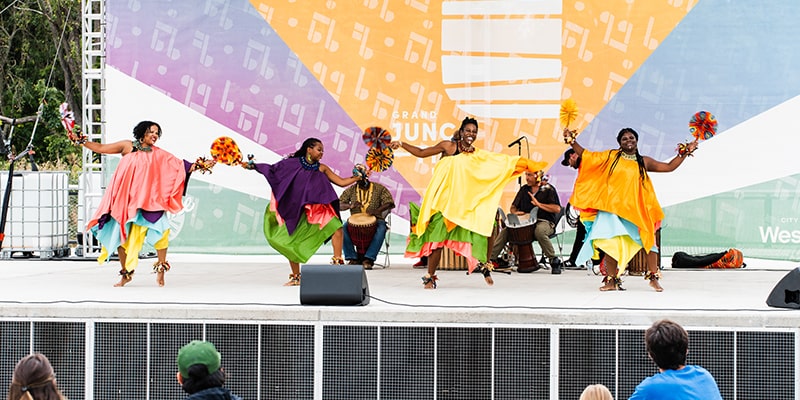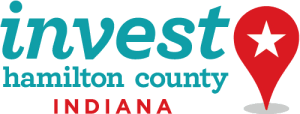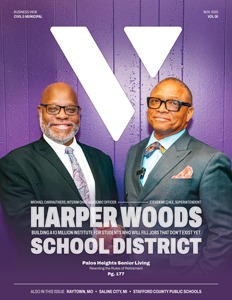Building a Sports Technology Empire While Preserving Small-Town Character
Discover How a 400-Acre Sports Campus Anchors a Three-Pillar Strategy Attracting IndyCar Headquarters, $1.5 Billion in Development, and 5.5 Million Annual Visitors.
Westfield, Indiana has quietly transformed from a community of fewer than 10,000 residents in the 1990s to the fastest-growing city in the state, now home to more than 50,000 people. The city ranks as the sixth-fastest-growing municipality in the country yet maintains a distinct identity. “Our motto in Westfield is we have small-town values, big city amenities,” Mayor Scott Willis explains. “Despite all that growth, I think most people will tell you that Westfield feels more like a small town in terms of the people and the culture and just the warmness that comes with that.”
The balance between expansion and character presents challenges familiar to growing municipalities nationwide. Revenue demands drive development, which can strain the community’s value. Westfield’s population surge has attracted over $1.5 billion in economic development, anchored by Grand Park Sports Campus, which recorded more than 5 million visits in 2023 alone.
The 400-acre facility ranks as the 16th-most visited venue in the United States, ahead of ESPN’s Wide World of Sports Complex in Orlando. Since Mayor Willis took office last year, his administration has focused on transformation and diversifying the tax base. “A lot of that growth had been on the residential side,” the mayor notes. “My focus is on transforming the downtown area, increasing the commercial tax base in our community to kind of stabilize the tax revenue that we receive.”
The Southwest Quadrant Takes Shape
Westfield’s downtown transformation centers on the southwest quadrant, where Union Street meets State Road 32. “We have recently seen the opening of our first mixed use development in that southwest quadrant, called The Union,” Jenell Fairman, Director of Economic Development, reports. “It includes multifamily, a handful of retail establishments that have started opening here over the last couple of weeks and a 300-space parking garage.” Additional mixed-use projects will break ground in 2025, including The Grand on Main, a $105 million development featuring 216 residential units, and the $125 million Park and Poplar project with retail, office spaces, brownstone apartments, and a public plaza.
Park Street and Jersey Street, once residential areas, have evolved into dining and retail corridors with independently owned businesses creating distinct experiences. Skender , a construction firm, will relocate its Indiana headquarters to The Grand on Main development, occupying 10,000 square feet of space. The company serves as both tenant and development partner in the project.

A downtown master plan covering the remaining three quadrants will be released this fall. “We’re really focusing on new urbanism concepts, including walkability,” Fairman says. “We have Grassy Branch Creek running through the middle of it, and a handful of parks that are all walkable to one another. We will have this almost circular pattern through the downtown that will allow people to have very convenient access to nature when they’re living within just a couple of blocks.”
Meeting the Housing Market Shift
The shift toward downtown living signifies changes in housing preferences across central Indiana and beyond. “Really what we’re seeing across the entire, say, central Indiana market, and I think that this is true in anywhere that has these up and coming downtowns, is that people that are looking for rental homes, apartments, condominiums; they’re looking for that more walkable environment where they have immediate access to these businesses,” Fairman explains.
“The traditional multifamily that we typically refer to as garden style, where it’s freestanding and you just walk up from your parking lot and you have detached lawns and maybe you have a swimming pool, they’re really struggling from a leasing standpoint.”
Younger demographics increasingly prioritize flexibility and mobility over homeownership, viewing rental housing as a strategic choice rather than a temporary solution. The median home listing price in Westfield reached $497,000 in early 2025, making rental options attractive for those who prefer investing capital elsewhere or maintaining career flexibility.
“When there’s a mixed-use development and you have the leasing office tied in between the residential and the commercial side, those developers, the property managers are able to curate an experience,” Fairman notes. “They know the demographic that they’re trying to bring on the residential side, and they target businesses that are supporting that demographic. Now you have a community that really is cohesive.”
A Three-Pillar Economic Vision
Westfield’s economic development strategy rests on three distinct pillars designed to diversify revenue beyond residential property taxes. “Grand Park is this 400-acre campus that no other community, quite frankly in the world, can offer a business,” Mayor Willis states. “It’s a testing ground; it’s a proving ground for products. So, we’re very, very focused on bringing in businesses in the business of sports.”
The city plans to have an incubator within Grand Park to create an ecosystem around sports innovation, attracting companies developing products and services for the athletics industry. The second pillar targets the downtown with shops, restaurants, and small businesses. “Right now, we have nobody working downtown. Very few people live downtown,” the mayor says. “So, we’re trying to create more walkability and 24/7/365 in our downtown.”
The third pillar focuses on high-tech manufacturing. NorthPoint, an established industrial park, has nearly reached capacity with only a few parcels remaining. NorthPoint II, a new 170-acre campus approved after Mayor Willis took office, will accommodate corporate campuses and single-site manufacturing aligned with the city’s vision. “We don’t want dirty industrial manufacturing in our city, but when you look at medical devices, you look at life sciences, food, there’s a lot of industries out there that do high tech, clean manufacturing,” the mayor explains.
Westfield employs targeted incentive strategies including tax increment financing and abatements for qualifying projects. “We are open for business and we will use every tool in our toolbox to get the right businesses into our community,” Mayor Willis asserts. “Not everybody’s going to get one. It has to align with our values.”

Central Indiana’s Sports Destination
Grand Park Sports Campus dominates any discussion about Westfield’s economic trajectory. The 400-acre facility attracts thousands of visitors Thursday through Sunday on most weekends, creating both opportunity and complexity for city planning. “Grand Park is definitely the elephant in any room in Westfield,” Mayor Willis acknowledges. “You can’t really talk about Westfield without factoring in Grand Park. The amount of tourism that it brings into our community annually is quite large.”
The east half hosts baseball tournaments every weekend throughout summer, accommodating youth leagues through college-level competition. The west side features multi-purpose fields where virtually any field sport finds a home. “The director of the park likes to say that any sport that can be played on a field has been played there,” Fairman notes. During late summer, the NFL’s Indianapolis Colts Training Camp transforms portions of the campus into a family-oriented experience with football activities, practice viewing areas, and temporary grandstands. A joint practice with the Green Bay Packers drew capacity crowds last season.
Winter programming shifts indoors to the event center, which houses three full-size football fields under one roof. The facility hosts gymnastics, volleyball, pickleball, basketball, wrestling and weightlifting competitions alongside traditional conferences. Gaylor Electric holds its annual meeting there, attracting thousands of participants. Indy Eleven, a USL soccer team, maintains its headquarters and practice facilities at Grand Park, while Fisher’s Arena football team also uses the campus for training. The venue ranked as the 16th-most visited sports facility in the United States in 2023, recording 1.3 million unique visitors totaling 5.5 million visits.
Building a Place for People Who Love Sports
Westfield’s vision for Grand Park encompasses professional sports infrastructure and technology development. Ed Carpenter Racing (ECR) announced plans in July 2025 to relocate its headquarters to the campus. The 76,000-square-foot facility will include engineering spaces, a public viewing gallery overlooking team operations, a merchandise store, and a Java House café. Construction begins in early 2026 with completion expected in early 2027.
“ECR’s decision to relocate and expand at Grand Park is a major milestone for our city,” Mayor Willis states. The project includes Grand Park’s first city-funded parking garage, enhancing access for visitors across the district. A proposed three to four sheet ice hockey facility will expand tournament capacity year-round, supporting figure skating, curling, public skating, and youth hockey programs alongside national competitions.
Plans for a full-service hotel and conference center address current capacity limitations. “We do not have enough conference space currently in Westfield,” Fairman explains. “The event center itself can be used for convention space, but it doesn’t really create that atmosphere for the more intimate type of gatherings. You’re not going to have a wedding reception in Grand Park Event Center, for example.”
Water amenities will enhance visitor experiences through a canal connecting an existing lake to an additional pond, enabling kayaking, paddleboarding, and paddle boats. “It’s an element that’s not greatly available here in central Indiana,” Fairman notes.
Comprehensive Planning for Sustainable Growth
Two parallel comprehensive planning efforts guide Westfield’s development through the next two decades. “We’re laying out a vision for the entire township that will probably take the next 20 years to actually build out, but we want to be proactive with that,” the mayor explains. The approach anticipates historical patterns in Hamilton County where municipalities eventually absorb their townships. A separate downtown revitalization plan addresses the three remaining quadrants, building on the completed southwest section. Both plans will integrate by year’s end.
Growth management requires deliberate pacing. Grand Park is located within an Economic Development Area, enabling tax increment financing to fund additional infrastructure supporting the Grand Park District’s expansion. The 2025 civil city budget totals $120.9 million, funding a new police headquarters, additional fire and police personnel, and infrastructure projects including multiple roundabouts and road extensions.
Educational demands mirror municipal growth. Westfield Washington Schools, the fastest-growing district in Indiana, enrolled nearly 9,800 students in 2023-24 and will open two new elementary schools in the 2025-26 school year plus a new middle school in 2027-28. Since 2020, enrollment has increased by 1,895 students.

“We’ve tapped the brakes a little bit on the growth, but we’re trying to find a balance,” Mayor Willis says. “A hundred years, now, a thousand years from now, people are going to look back and say, wow, this city really makes sense. It fits, it flows, it provides all the things that a community needs to have to thrive.”
AT A GLANCE
Who: City of Westfield, Indiana
What: The fastest-growing city in Indiana and sixth-fastest in the nation, home to the 400-acre Grand Park Sports Campus, ranked 16th-most visited venue in the United States
Where: Hamilton County, Indiana
Website: www.westfieldecdev.com
PREFERRED VENDORS/PARTNERS
Invest Hamilton County: www.investhamiltoncounty.com
Opportunity awaits in Carmel, Fishers, Noblesville and Westfield, located in Hamilton County, Indiana. Just north of Indianapolis, Hamilton County is one of the fastest-growing counties in the country. 150+ headquarters including insurance, finance, tech, ag, logistics and healthcare. Home to Grand Park Sports Campus, Ruoff Music Center and Conner Prairie.
Keystone Group: www.keystone-corp.com
Keystone Group is a transformational real estate development/redevelopment company focused on mixed-use urban projects. Our mission is creating transformational developments that benefit the community.



